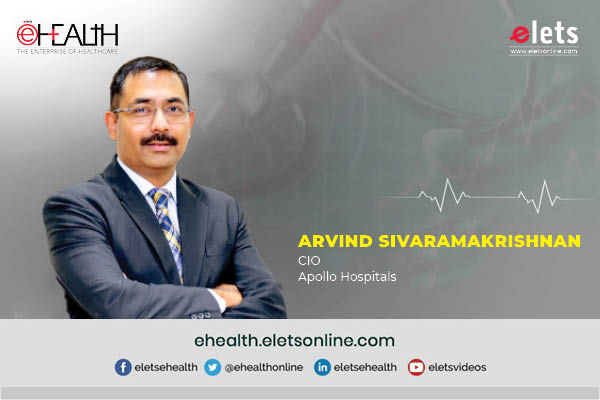
Technology enables innovative solutions to provide the best treatment for those suffering from various ailments. The paradigms of conventional healthcare are evolving with medical innovations transforming the prevention, diagnosis, management and monitoring of different diseases and health conditions. However, cutting-edge technologies in healthcare are often inaccessible to patients in rural areas due to distance and cost of travel. Let us examine how medical technology can help in increasing access to advances in healthcare irrespective of the geographical location.
EMRs (Electronic Medical Records)

Electronic Medical Records (EMRs) can enable implementation of treatment plans irrespective of which centre the patient goes to for treatment. Vital information such as lab reports, diagnoses, and prescriptions can be accessed anywhere and anytime, enabling doctors to provide timely and accurate care without the patient need to travel miles.
Smart Wearables
Remote patient management can be enabled through smart wearable devices. Paired with a mobile phone and app, these can give real-time information about vital health statistics to a doctor who can access it remotely on a tablet or phone. The real-time monitoring offered by the device helps in reducing the frequency of visits to the clinic. Patients are connected to their doctors irrespective of the care setting. Doctors and patients need not worry about the security of their health data as it can be secured through blockchain technology.

e-ICUs
An integrated network of e-ICUs in partnership with local public and private healthcare centres can address the lack of access to critical care. The e-ICU model allows training as well as access to ICU specialists through a remote ICU setup, wherein a central team monitors patients over a video link in real-time. The e-ICUs have standardised protocols and operating procedures and are supported by smart solutions. The e-ICU model ensures a faster turnaround in the clinical management of critical cases.
AI, ML and IoT
AI (artificial intelligence), ML (machine-learning), Big Data and the Internet of Things are reshaping healthcare delivery. It can be used to analyse medical data and identify patterns to make evidence-based decisions and predict problems before they occur. Similarly, the Internet of Things will be instrumental in developing medical devices and advanced equipment for real-time diagnosis, monitoring, tracking, and controlling diseases.
Medical Devices
New medical devices are a key element of health innovation. According to the World Intellectual Property Organisation, recent years have seen regulatory agencies announce record rates of novel medical device approvals in multiple areas including mechanical heart valves, digital health technologies, and 3D printing devices.
Gene Therapy
The increasing sophistication of data science is leading to genomic analysis being used to develop precision medicine. Gene therapy and gene-based therapy have revolutionised clinical medicine and specialty care especially in rare diseases and conditions for which there is no conventional treatment available.
The Way Forward
COVID-19 has highlighted the importance of accelerating innovation in healthcare. While the pandemic’s impact has lessened, the risk of new outbreaks of other viruses is on the rise. Maintaining the innovation momentum will be crucial for an effective response against these infections. The future of healthcare calls for a real-time, collaborative approach to innovation that involves various scientific disciplines and integrates education, research, big pharma, hospitals and patients.
Role of enabling policies
Innovations require not just funding but policies that encourage and support the development of an enabling ecosystem. The government can accelerate the availability of innovative technologies by developing schemes for tax relief and providing incentives to programmes that enable technologies to move from their academic concept to viable commercial enterprises.
Healthcare institutions should invest in innovative products and participate in initiatives that provide funds for small healthcare centres to procure new technologies and innovations. Connecting small centres with bigger institutes will facilitate the integration of innovations at a greater scale and with ease.
Portfolio of Innovations
For faster introduction of medical innovations, healthcare institutions should have a portfolio of innovation initiatives. They should review the innovation pipeline periodically and work to strengthen their innovation led investments. Quicker integration of innovation in healthcare delivery can occur through:
Embracing a “beta” mindset and soft-launching innovative models keeping safety in view, which can be improved through user feedback.
Incorporating operating models to select and test multiple innovations quickly rather than committing to a single option.
Decision-making by key stakeholders to speed up decisions for a broad portfolio of innovations.
Rural Access through Healthtech
Today, technology underlies most aspects of healthcare delivery. Healthtech plays an important role in increasing the efficiency of care, refining clinical outcomes, and reducing human error. The healthtech ecosystem will reshape and disrupt delivery of healthcare in rural areas where access to advanced care is difficult. This will lead to improved health outcomes and redefine the way healthcare providers and receivers in rural areas interact. Using data in innovative cognitive learning based algorithms has significantly evolved, enhancing evidence based care plans and pathways to be used across the ecosystem. This greatly furthers the accessibility of best care irrespective of geographic constraints.
Views expressed by Arvind Sivaramakrishnan, CIO, Apollo Hospitals
Be a part of Elets Collaborative Initiatives. Join Us for Upcoming Events and explore business opportunities. Like us on Facebook , connect with us on LinkedIn and follow us on Twitter , Instagram.












